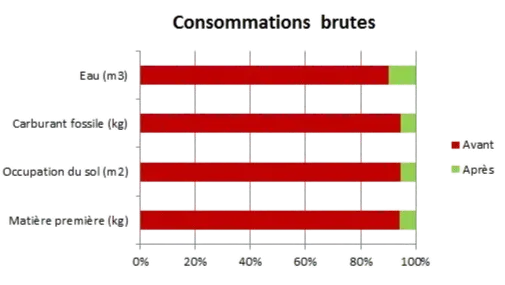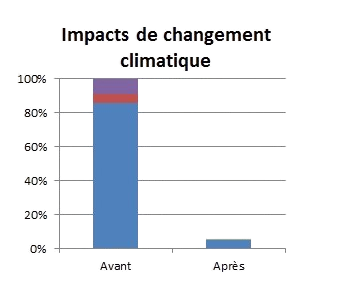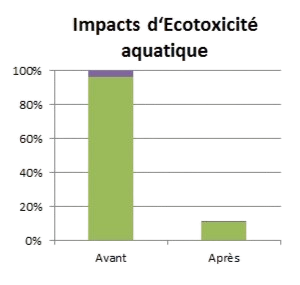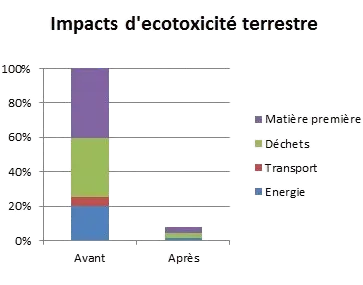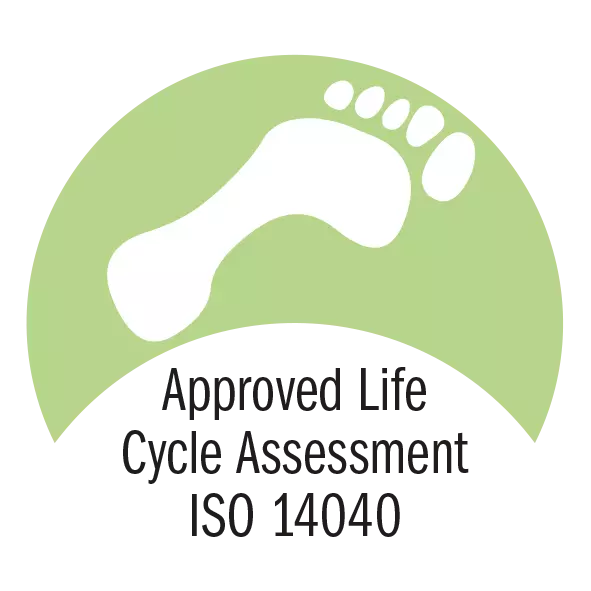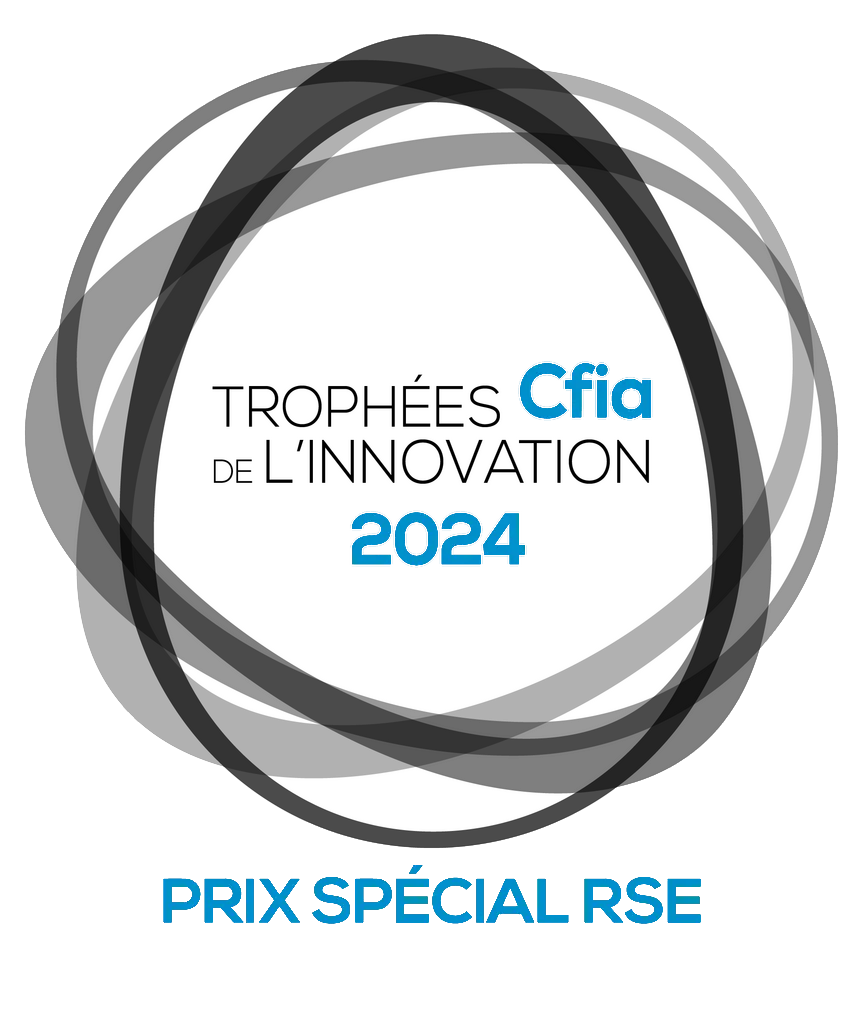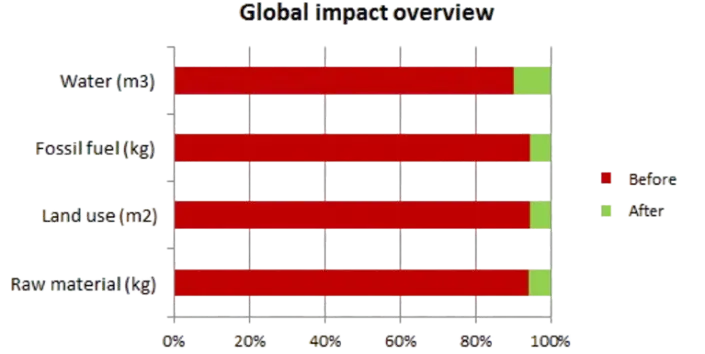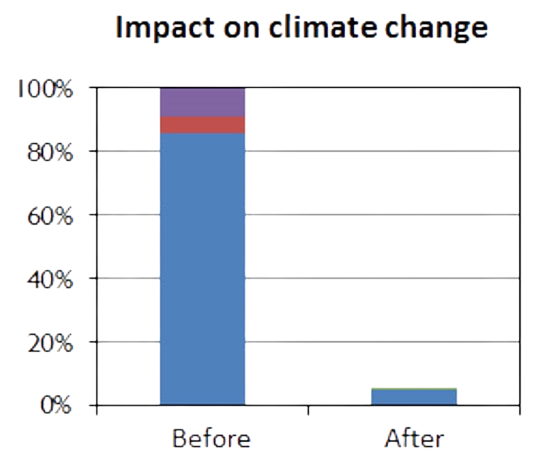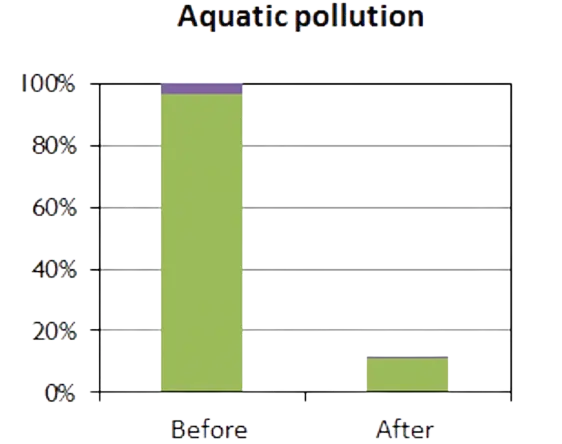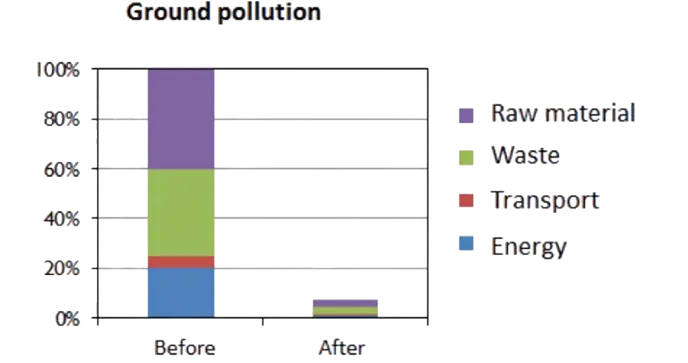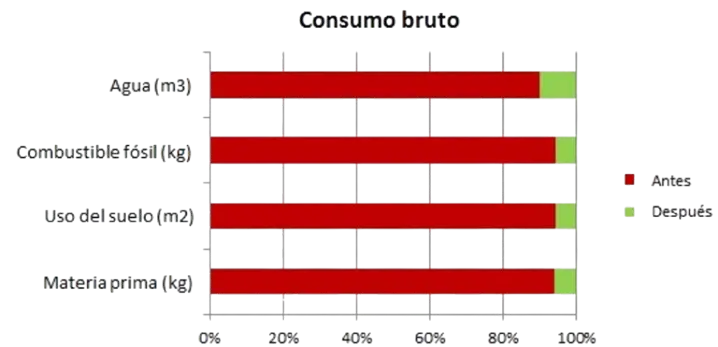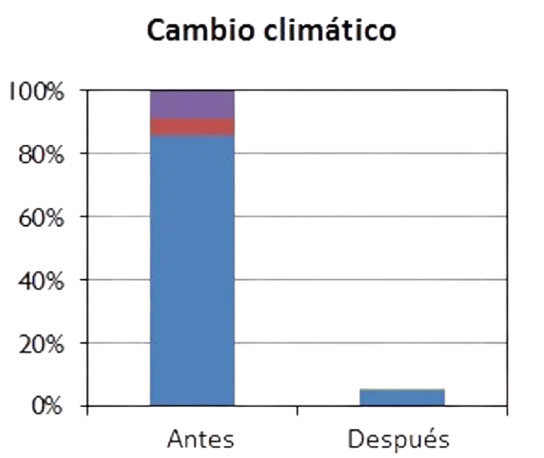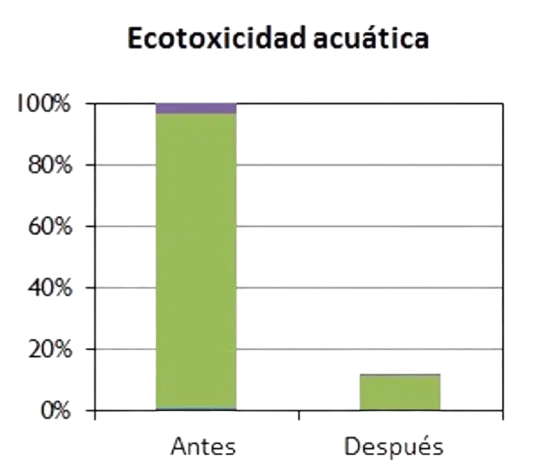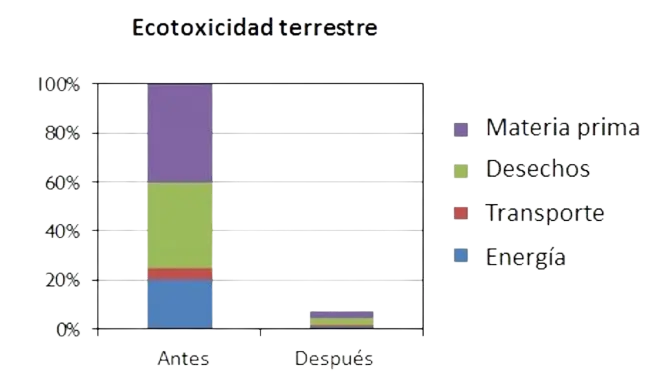The innovation of GreenCIP in industrial washing
One of the key issues with washing is that sooner or later the soda becomes contaminated and inevitably ends up in the sewer, unless the quality of the cleaning is compromised, thereby increasing health risks.
From now on, this glass ceiling has been broken as the Green CIP process will allow for the treatment of all types of industrial detergents and all types of Process CIP applications, including washers or washing tunnels.
The GreenCIP process will purify used washing solutions and allow for their infinite reuse. This is already a technological breakthrough in itself, but even better, we have demonstrated that the detergent power of regenerated soda is far superior to that of standard "new" soda!
The principle of regeneration does not proceed through a physical action such as centrifugation or membrane filtration; it is based on a much more efficient physico-chemical treatment process involving coagulation, flocculation, and separation of organic matter. The regeneration yield of GreenCIP is guaranteed to be over 90% at the same concentration.
In fact, this process incorporates the well-known and well-controlled practice of physicochemical treatment used in wastewater treatment plants (DAF), but it would be impossible to apply with standard market reagents on soda or acid given the extreme pH constraints and high temperatures to which we are de facto subjected.
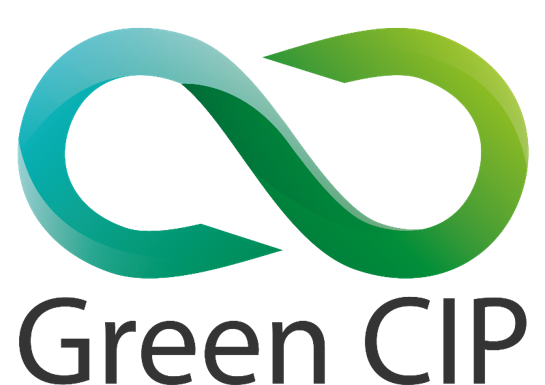
Advantages of GreenCIP
Reusing cleaning solutions infinitely allows for the optimization of cleaning processes while maintaining the effectiveness of the detergent solution in terms of bacteriological performance, and even improving it, as seen in the dairy industry. Scientific work conducted by Elodys International has demonstrated and quantified a known phenomenon of self-additivation of the solution due to the transformation of certain soluble organic matter elements.
The surface tension of a regenerated soda solution is significantly lower than that of a new solution without additives.
The process affects water, energy, and detergent consumption, washing time (productivity), washing quality, and the cost of treatment and spreading.
In addition to operational costs (Opex), Green CIP also has an impact on Capex as it increases capacity on process equipment (tanks, CIP lines, production lines, etc.), availability on washing lines (CIP station), capacity on the wastewater treatment plant, and even on the boiler room (reducing consumption and eliminating sudden spikes in demand)
The CIP processes, washers, and washing tunnels are major consumers of resources but also significant emitters in terms of discharges: GHG, COD, sodium, phosphorus, etc. Reducing consumption and discharges associated with cleaning can significantly reduce the environmental impacts of cleaning in place. Our research has shown that the impacts are even greater if we switch to potash instead of soda.


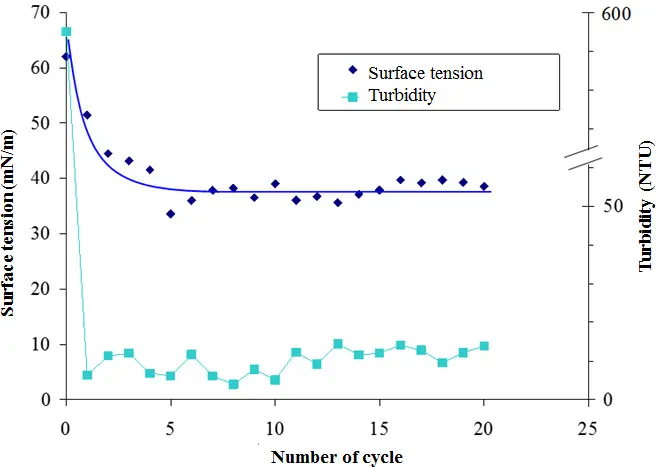
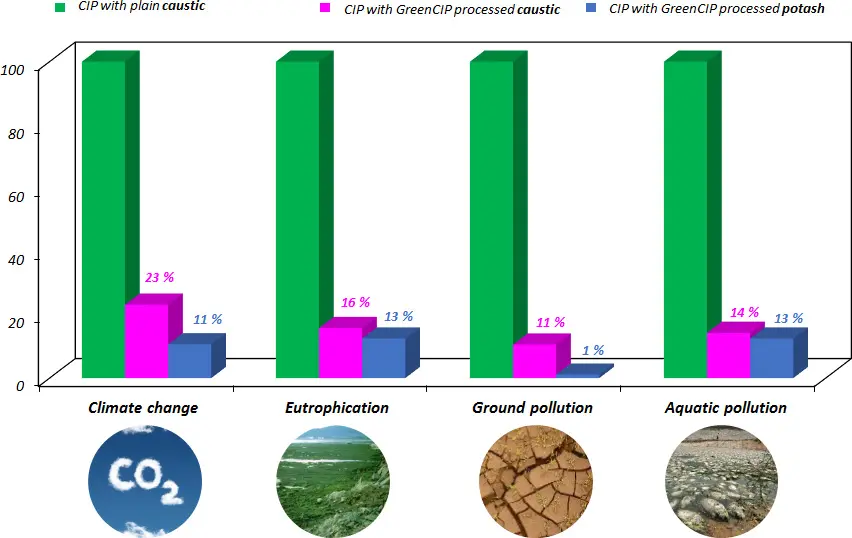
Advantages of GreenCIP
Reusing cleaning solutions infinitely allows for the optimization of cleaning processes while maintaining the effectiveness of the detergent solution in terms of bacteriological performance, and even improving it, as seen in the dairy industry. Scientific work conducted by Elodys International has demonstrated and quantified a known phenomenon of self-additivation of the solution due to the transformation of certain soluble organic matter elements.
The surface tension of a regenerated soda solution is significantly lower than that of a new solution without additives.
The process affects water, energy, and detergent consumption, washing time (productivity), washing quality, and the cost of treatment and spreading.
In addition to operational costs (Opex), Green CIP also has an impact on Capex as it increases capacity on process equipment (tanks, CIP lines, production lines, etc.), availability on washing lines (CIP station), capacity on the wastewater treatment plant, and even on the boiler room (reducing consumption and eliminating sudden spikes in demand)
The CIP processes, washers, and washing tunnels are major consumers of resources but also significant emitters in terms of discharges: GHG, COD, sodium, phosphorus, etc. Reducing consumption and discharges associated with cleaning can significantly reduce the environmental impacts of cleaning in place. Our research has shown that the impacts are even greater if we switch to potash instead of soda.


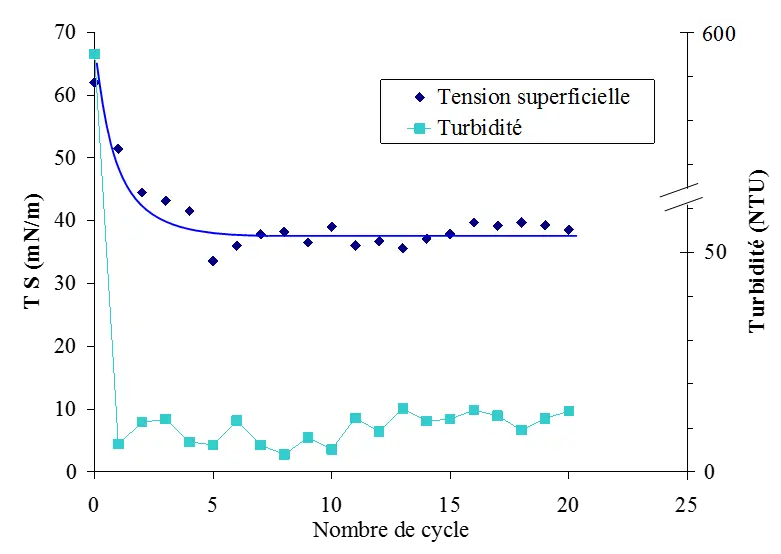
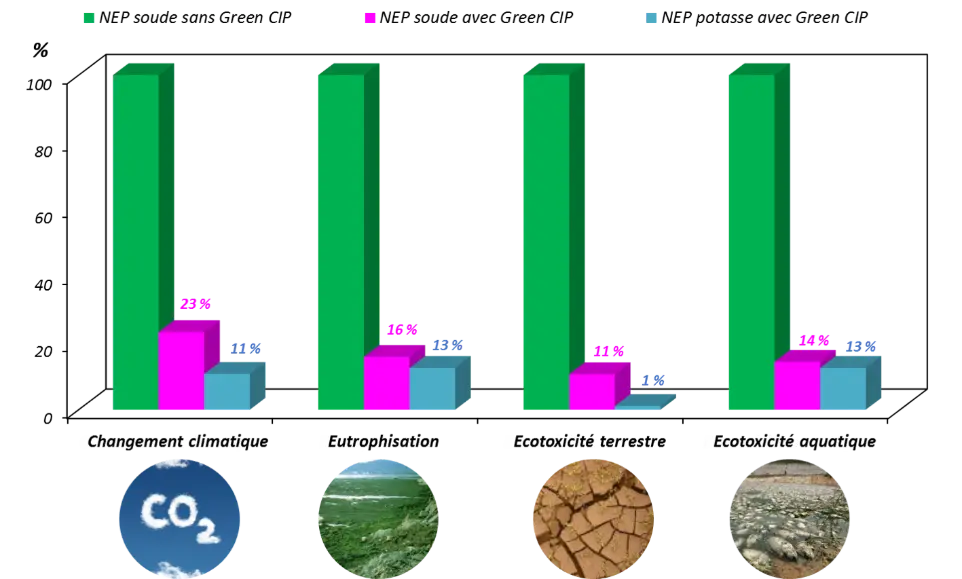
Advantages of GreenCIP
Reusing cleaning solutions infinitely allows for the optimization of cleaning processes while maintaining the effectiveness of the detergent solution in terms of bacteriological performance, and even improving it, as seen in the dairy industry. Scientific work conducted by Elodys International has demonstrated and quantified a known phenomenon of self-additivation of the solution due to the transformation of certain soluble organic matter elements.
The surface tension of a regenerated soda solution is significantly lower than that of a new solution without additives.
The process affects water, energy, and detergent consumption, washing time (productivity), washing quality, and the cost of treatment and spreading.
In addition to operational costs (Opex), Green CIP also has an impact on Capex as it increases capacity on process equipment (tanks, CIP lines, production lines, etc.), availability on washing lines (CIP station), capacity on the wastewater treatment plant, and even on the boiler room (reducing consumption and eliminating sudden spikes in demand)
The CIP processes, washers, and washing tunnels are major consumers of resources but also significant emitters in terms of discharges: GHG, COD, sodium, phosphorus, etc. Reducing consumption and discharges associated with cleaning can significantly reduce the environmental impacts of cleaning in place. Our research has shown that the impacts are even greater if we switch to potash instead of soda.


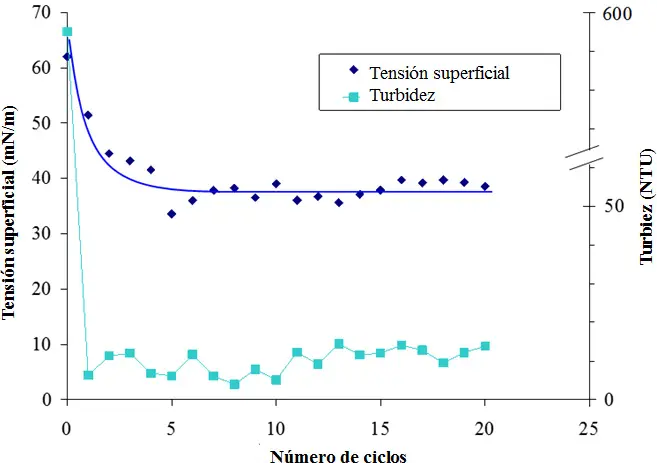
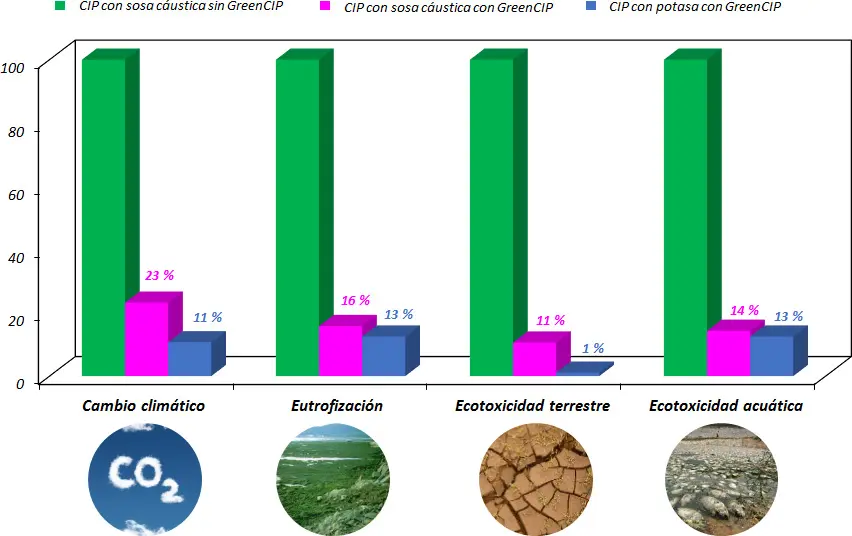
Feedback: CILAM in Reunion Island
The first industrial installation was completed in 2012 at the CILAM site in Réunion. The GreenCIP has achieved significant savings and greatly reduced the environmental impact of the plant. We invite you to browse the articles posted by Mr. Olivier BARRAULT to recap the years of operation of this Green CIP unit:
"I am grateful to have led this innovative project with me that gives CILAM a head start in terms of CSR."
(Luciano Leveneur, Industrial Director CILAM)
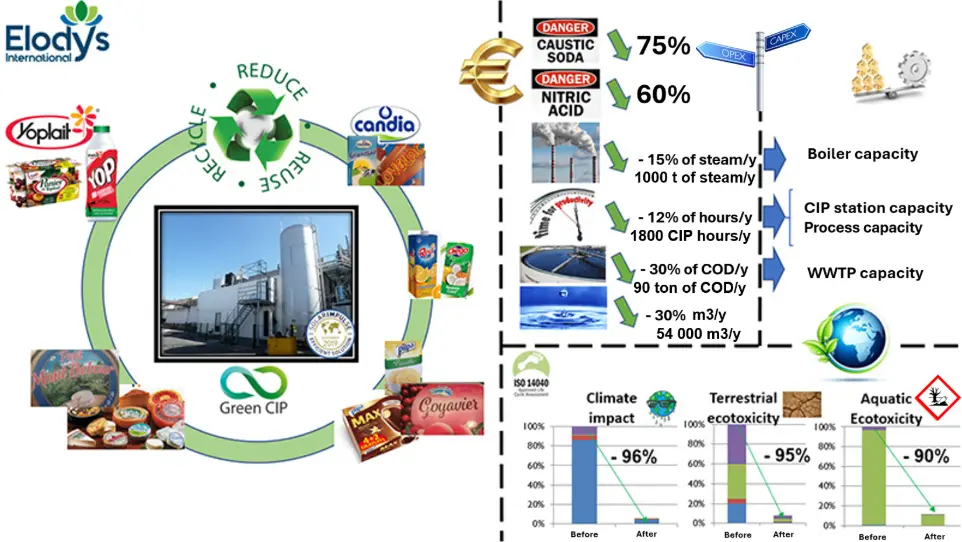
Solar Impulse
The SOLAR IMPULSE Foundation labels Green CIP: an effective and cost-efficient solution!
Green CIP has been selected by the Solar Impulse Foundation to be part of the "1000 Solutions Community" that Bertrand Piccard recommends implementing as soon as possible due to their significant environmental benefits, as well as their financial profitability. It is a strong leitmotif that aims to align the necessity of acting for the planet without delay, while remaining within a viable economic model.
A team of experts has therefore validated the effectiveness of the Green CIP process on three key aspects:
- The technical feasibility
- The environmental and socio-economic benefits
- Profitability
Green CIP is labeled in the category: "Industry, Innovation & Infrastructure," with a strong link to the category "water pollution."
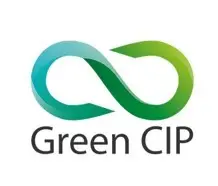

Potash and Milk Membranes
5 years of work have led to the scientific and then industrial validation of the possibility of regenerating potash, just like soda.
However, potash (KOH) is a natural detergent that is more effective than soda, and its self-additivation through the saponification of fatty acids occurs with even greater efficiency than that of soda.
Furthermore, potash has an important additional advantage in that its "rinseability" is much higher than that of soda, resulting in time savings during rinsing and additional water savings.
Finally, the substitution of soda with potash has a much greater environmental benefit than soda. Indeed, its carbon footprint is lower.
But we must also consider the ultimate waste produced by soda in the sludge of the wastewater treatment plant, namely sodium. It is well known that in the long term, its effect on soil sealing and its impact on crops is harmful. In contrast, potash produces a very useful waste, namely potassium, which everyone knows is an excellent natural fertilizer. This is what can be called a virtuous process of circular economy, or more simply, ecology.
On this basis, Elodys was able to develop a specific GreenCIP application dedicated to dairy membranes (ultrafiltration, nanofiltration, or reverse osmosis), whether they are mineral or organic, in order to replace the complex and very expensive detergents on the market with regenerated and naturally additive solutions.
Industrial validation in 2019 with our two industrial partners: LAÏTA & SAVENCIA.
The Future Investment Program supported the project for the application of the regeneration of classic "Green CIP" solutions for cleaning sensitive equipment - filtration membranes.
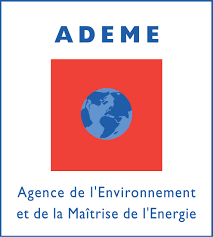


Industrial Partners :
Patrice Gourdon, Scientific Director of the Laïta Group
This video illustrates the result of the collaboration between Elodys and Laïta on the innovative project applying Green CIP technology for the regeneration of detergents, on one hand for potash, and on the other hand for replacing commercial detergents on the market intended for washing dairy membranes with regenerated and naturally additive solutions.
“It is a process adapted to our dairy industry constraints. It is a deliverable that represents a reduction in the pollutant load discharged as well as a decrease in the consumption of detergents. This solution is fully functional.”
Dr. Marie Furic, former Research Engineer at Elodys
This video outlines the journey of Marie Furic within our team, particularly in the context of the research program she led to enable the application of our Green CIP technology in the field of dairy membranes.
Example of GreenCIP Application
Metallurgy Application (2018)
Yet another new application area for the Green CIP process, but this time in the world of metallurgy. Some industrial players in the metallurgy sector indeed carry out surface treatment, where the baths must be regularly renewed due to their concentration of metals.
Such is the case for one of Elodys' clients, the company Honeycomb, whose processing of aluminum parts leads to this type of issue that generates significant treatment and disposal costs.
The GreenCIP solution significantly reduces these impacts in this case.
Sugar Application (2019)
After 12 months of laboratory work followed by field validation, the Elodys team concluded that the Green CIP application is feasible for the regeneration of highly concentrated caustic soda resulting from the washing of sugar evaporators. This led to the implementation of a first industrial project at the Tereos site in Bois Rouge on the Reunion island.
We have thus demonstrated our ability to further expand the scope of the Green CIP technology, with new challenges and constraints, but always exciting.
This is a very beautiful achievement to which we are associating two of our Partners: the companies STIA and HONORE.

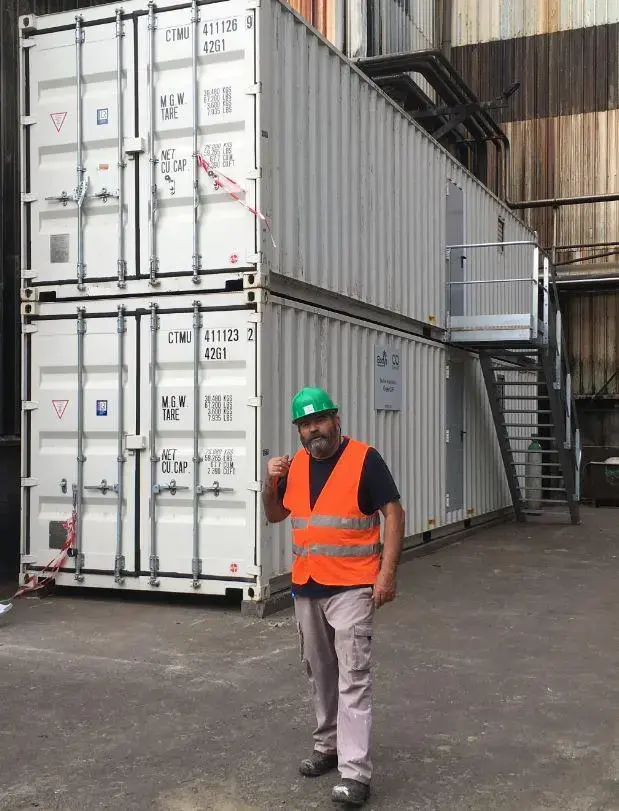
Feedback on the installation carried out for the Laïta Yffiniac site (2024)
Application in the field of pastries (2024)
Le secteur de la fabrication de pâtisseries et de viennoiseries n'est traditionnellement pas un utilisateur de stations de NEP. Toutefois, nous avons réalisé chez ce client un système complet de diverses récupérations d'eau, et une NEP qui intègre dès l'origine le principe de la régénération des soudes et acides. En outre, l'installation traite également une partie des effluents pour réduire les rejets.
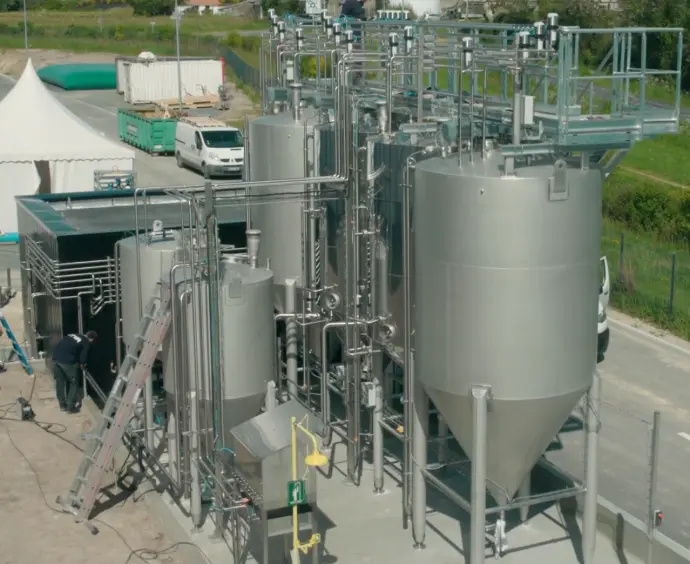


Exemple de Jar test réalisé sur une solution de soude chaude polluée en lait

